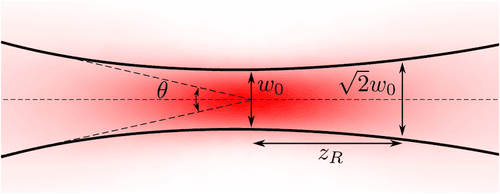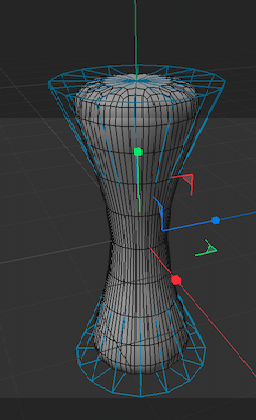Gaussian light beam
-
Hi guys,
I'd like to create a gaussian beam with c4d/RS -- something pretty much exactly like this:
https://www.youtube.com/watch?v=JVWi-ji-C1QThe way the guy in the video does it goes a little too above my head, so I'm wondering if a simpler approach exists. Maybe a volumetric IES light? Maybe a vdb?
Any words appreciated! Thanks
-
Hi philosophy-chemical,
The question would be, why not use two Spotlights? What is the result that you are after?
If you need that, perhaps use the "Share Your idea" here as a request:
https://www.maxon.net/en/I found an OSL Shader for Gaussian "Light" (Just by googling it, but I can't support this here, as we do not share code here, for security reasons. I used -- Gaussian light osl shader for Redshift? -- sometimes writing redshift instead of Redshift worked, as I checked if Safari or Chrome produces the same result)
Perhaps ask in the Redshift Forum about OSL
https://redshift.maxon.net/I explored how far I could get with a Cloner set up, but that didn't yield the desired results.
My best wishes
-
Thanks Dr. Sassi for the response.
The reason to not use two spotlights is that they start from a single point source. But a gaussian profile has a pretty distinct shape:

Especially for purposes of scientific illustration where beam structure is important, the beam shouldn't look like it's converging to a single point source. The guy in the video has the result down perfect in terms of how the beam should look when it's coming out of a microscope objective.
I'm searching for the OSL shader you referenced at this moment (struggling to find the right one with Google but continuing to try), thank you.
-
Thanks for the reply, philosophy-chemical.
I checked my library, e.g., the book "Light Science", Physics and the Visual Arts (2nd edition, Springer 2020), and I couldn't find any entry there. Hence, my question: when they leave it out, I need to know more about it. Thanks for your input.
Perhaps check directly with Redshift's Tech-Support, and please share your needs specifically, and ask if Nicolas Burtnyk has any input for you.
I know from little talks we had that Nicolas Burtnyk, Executive VP, Rendering
https://www.maxon.net/en/about-maxon/executive-leadership
has an extreme deep knowledge of light science. Perhaps that is a better place to engage for your search. His knowledge makes me feel, even after decades of studying Color and Light, that I have not reached anywhere near his knowledge.My feeling is that it needs a lot of attention to get the spatial intensity of the light correct if a Gaussian distribution is complete applied, if you ask for a valid, scientifically sound representation. Especially when, as you mentioned, optical elements are in the setup.
If any render engine is able to recreate this, it is questionable, as all calculations are based on RGB channels, and not on frequencies, which is needed to get to that precision.
Light is complex, and the simulation in a render engine is typically an attempt to get as close as possible to a sound result, while keeping the render time reasonable. Light in nature does not have such a problem, a near infinite bounces are done in "real-time" naturally.
Fingers crossed you get an actionable answer.
Enjoy your project
-
This post is deleted! -
I'm making this for purposes of scientific illustration... just a pretty picture to explain an experimental setup, so I have some room to be artistic and I have the luxury of not having to be absolutely pixel-perfect with 100% optical accuracy. Discussing this with redshift folks (on discord) I'm advised of methods to make it with Houdini but I have no actionable leads on how I can implement this with c4d/redshift.
My c4d skill is higher than my Blender skill so instead of just working in Blender I'm choosing for now to make a mesh like this:

(cylinder with 2 height segments; and the middle loop edge I just make smaller... and then put the whole thing in sub-d), and I will give it an emissive appearance and play with opacity settings until it looks enough like a light beam. I expect it might be a hairy process! Given that I'll have overlapping geometry... a particle exactly where the beam-waist is converging... the beam coming out/touching the lens.... If this process of making the mesh look good enough to be a light beam with redshift proves too unwieldy, then I'll bite the bullet and try to make this image in Blender. -
Hi philosophy-chemical,
I think the Wiki page
https://en.wikipedia.org/wiki/Gaussian_beam
showcases what needs to happen, and why I see some problems just to shape it and have the "photon-density" equally inside the whole body.
The heat maps in the link show this clearly.As light spreads, its intensity lowers, while the spread here follows the Gaussian formula. I think spread and intensity is a phenomenon that applies universally. This might introduce a complexity you don't need for a visualization that ends up being 2D. Just a guess.
All the best
-
Hi Dr Sassi, So I was able to make the gaussian beam as I mentioned, with a 2 height segment cylinder, with middle loop appropriately squeezed. I was able to make it look good with some RS shaders (crucially, had it go transparent when overlapping the lens etc using ramps to mask it with material blender nodes; and I managed to make the light beam itself look okay too, using a combination of noise, fresnel, etc.).
Indeed it was the peak intensity when the beam is converging that proved most difficult! https://i.ytimg.com/vi/MU4eOJw2sBQ/maxresdefault.jpg
(like this is what I was going for, except my light beam is just a single color). I tried for half a day to get something like this, but I just couldn't get anywhere appreciable close... and yes, in the end I did it in photoshop (with duplicated cascades of oval shapes, one slightly larger than the other). I kept fantasizing in my mind about the ability to define a valume structure kind of like how the guy in the linked blender video does... programmatically, or however which way, and also being able to use a shader to model the point-spread which I eventually resigned to doing in photoshop... but oh well, maybe one day.I will continue a bit more to refine what I have, but I think it's more or less acceptable what I've got going.
Thank you for your time and consideration.
-
Thank you very much, philosophy-chemical, for the feedback and reply.
It was a pleasure to look into it and to see how much you have established.
My best wishes for your project